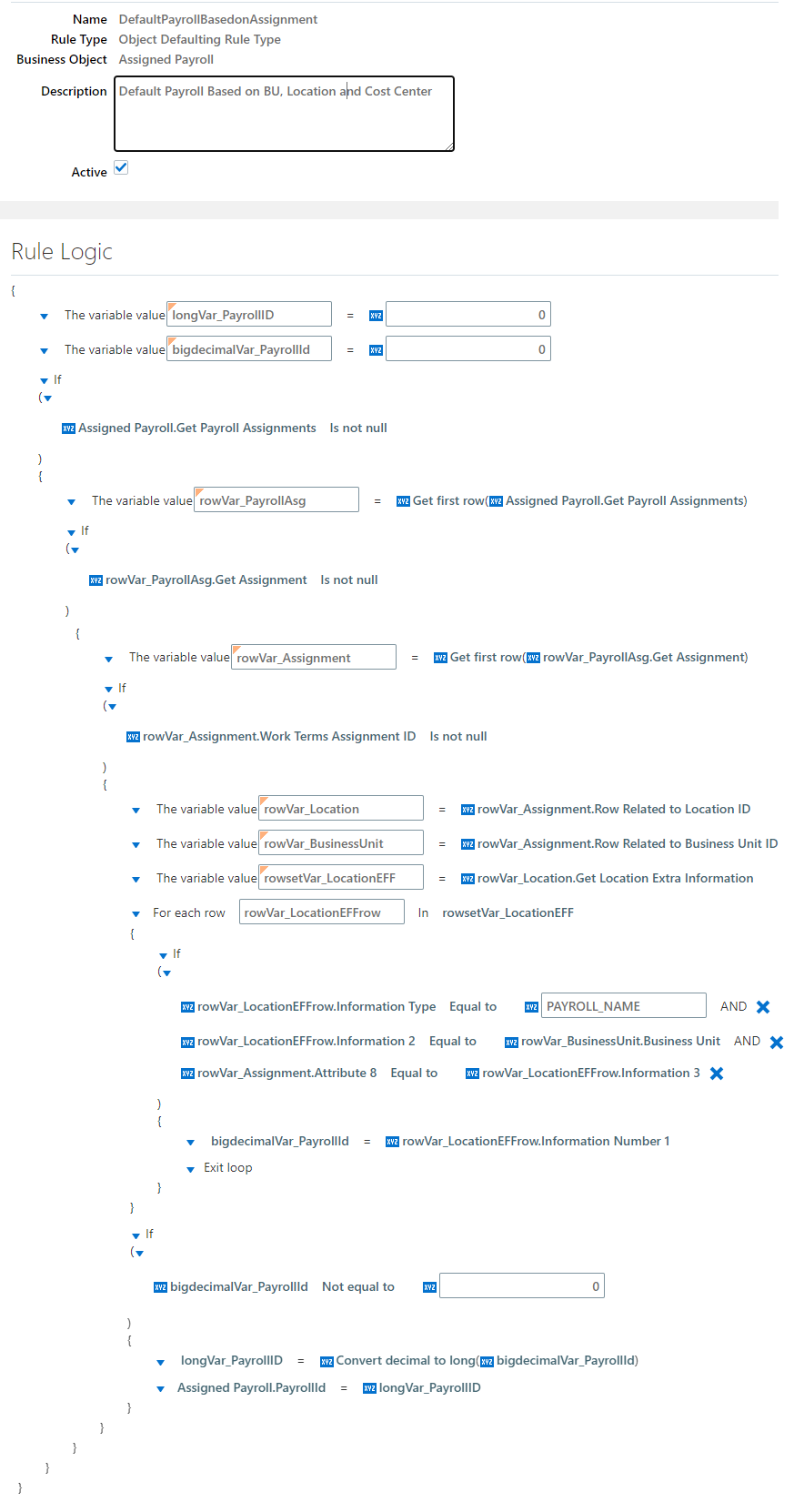Getting started
If you are new to Autocomplete, refer this blog on how to enable Autocomplete and key links to get you started. You must complete the comprehensive training if you are the implementor.
Utilize the DFF/EFF Framework to support Autocomplete Rules
Use case – Default Payroll based on BU, Location and Cost Center (Assignment DFF)
- Becomes impossible to hard code all the combinations in the Autocomplete rule especially for a large organization with 1000s of Locations and BUs
- Utilize the DFF/EFF framework to store the mapping
- In this example, we are storing the mapping of Payroll to BU, Location and Cost Center in Location EFF
- As a best practice, make sure the number of rows in EFF does not exceed 500
Other common use cases
- Default Salary based on BU and other assignment attributes
- Default/Validate BU based on Legal Entity

Location EFF Setup
Value Set Definition
- Autocomplete typically requires you to assign IDs of any business entity such as job, position, salary basis, payroll etc.
- Configure the value sets to store ID in the database the show the name of the entity in the UI
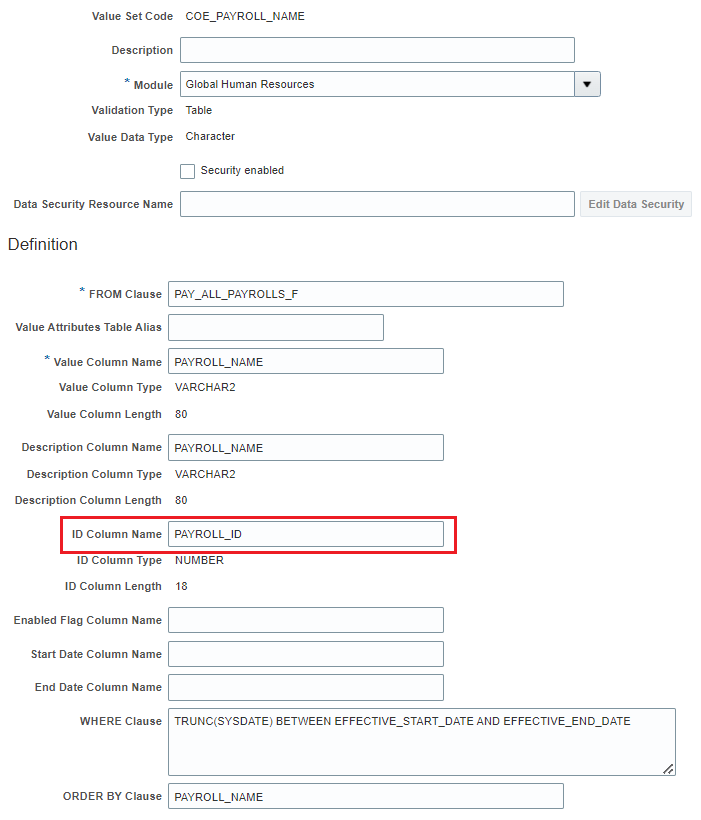
ID Column Name must be specified as PAYROLL_ID and EFF attribute should be defined as a Number.
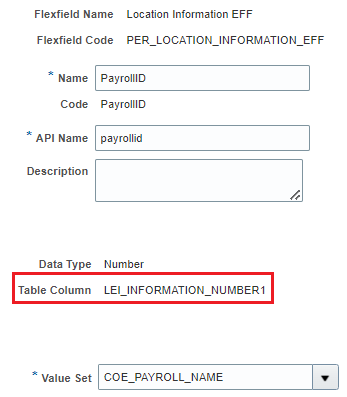
Location Extensible Flexfield Setup
Setup Extensible flexfield to include all the criteria fields. In this use case, Location EFF is setup to include a new context and attributes to enter –
- Business Unit
- Cost Center
- Payroll
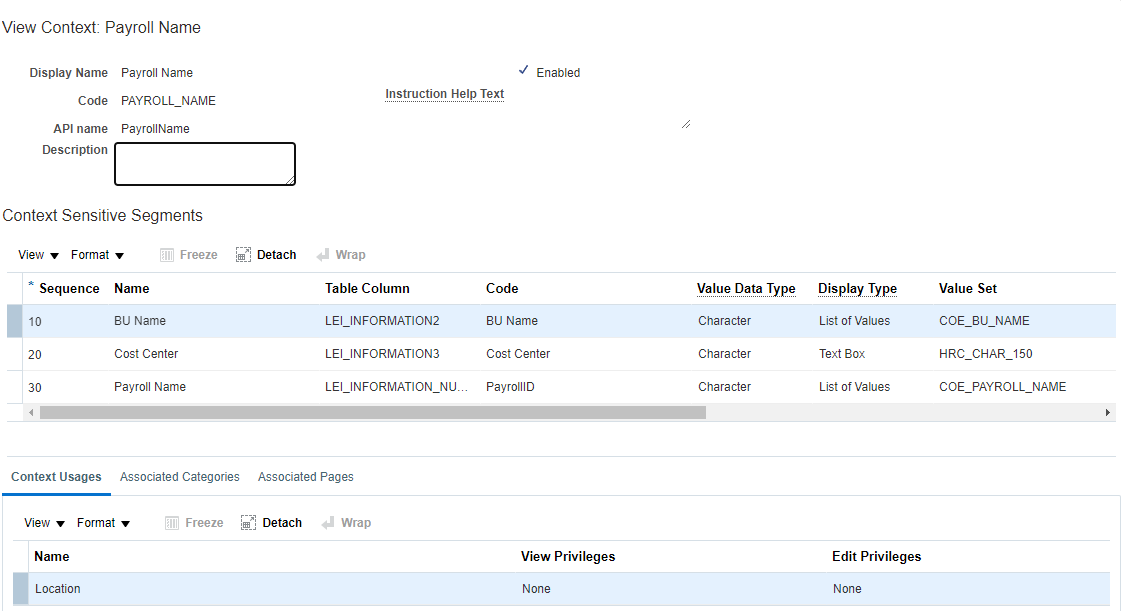
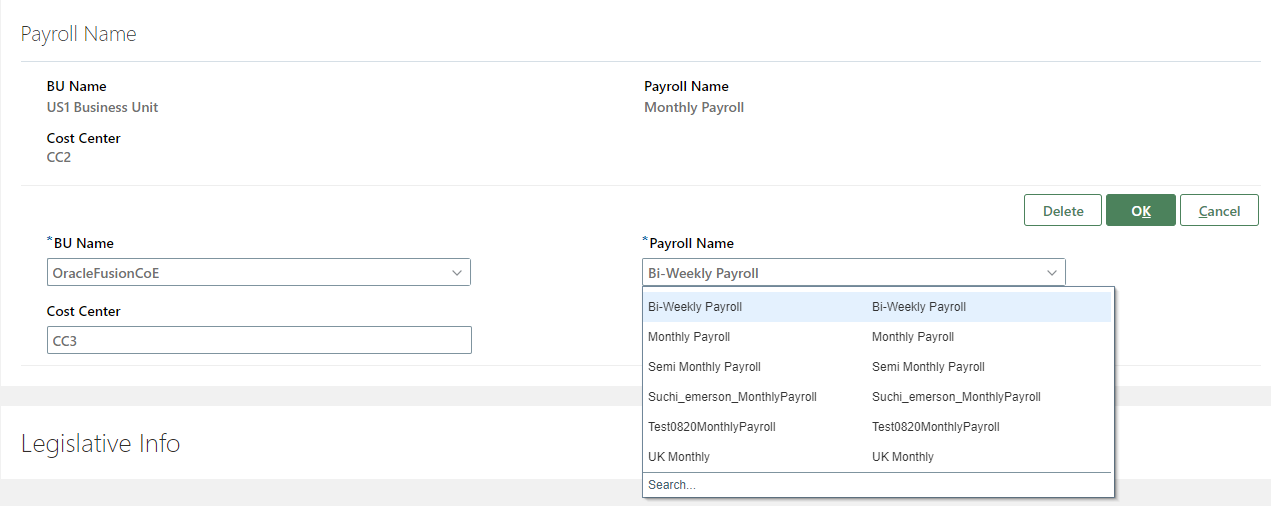
Autocomplete Rule Configuration
Additional pointers –
- Always add a condition to restrict the rule to the quick flows you want the rule to fire in. Use the EMP_Groovy_ActionTypeCode HCM Param for this.
- Review this blog for additional pointers on Payroll defaulting/validation using employment attributes
